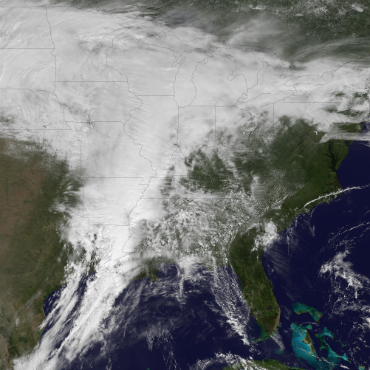Private sector could bridge satellite gap

NOAA is considering commercial satellite providers as one of several options to keep weather data flowing during a potential three-year gap in the government's satellite coverage.

Commercial satellite data providers are on standby to mitigate a potential gap of available data from domestic polar-orbiting weather satellites maintained by the National Oceanic and Atmospheric Administration.
The degree to which NOAA might utilize them, however, remains unclear.
The gap, which could occur by 2014 as existing polar-orbiting satellites lose functionality, has had NOAA scrambling to look for fixes, going as far as commissioning an independent study on the matter. No replacement polar-orbiting satellites are planned to launch until 2017.
While the study suggested using data from Chinese satellites was the only "silver bullet" solution, lawmakers expressed concern about that option at a Sept. 19 joint hearing before the House Science, Space and Technology subcommittees on Environment and Oversight.
The study also suggested partnerships with the commercial sector could help mitigate the data loss. Several lawmakers, including Oversight Chairman Paul Broun (R-Ga.) and Environment Chairman Chris Stewart (R-Utah) pushed NOAA to consider that option.
It appears NOAA is taking their advice to heart, said Anne Hale Miglarese, president and CEO of PlanetiQ, a commercial satellite data provider. Miglarese said NOAA is "more engaging" than they've been in the past, participating in technical meetings with companies in the industry.
"We want to co-create and innovate with NOAA. We want them to be a partner," Miglarese said.
Mary Kicza, assistant administrator for satellite and information service at NOAA, told the lawmakers that NOAA is "looking at several options" to mitigate the potential weather data gap, including exploring partnerships with commercial satellite providers.
Allowing a commercial presence into the space-based weather satellites field – heretofore a government monopoly -- might require a substantial change in the culture at the National Environmental Satellite, Data, and Information Service, the NOAA component responsible for weather satellite operations.
But Miglarese says space-based weather observations will be commercialized in any case. NOAA's pending weather satellite gap should serve only to speed up the process.
"Commercial [weather] observations from space will be an industry with or without the gap, but it just so happens that [commercial providers] are one of many strategies that need to be deployed in that risk mitigation strategy," Miglarese said. "Why not use multiple strategies, and why not look to U.S. industry as one of them?"
The most attractive benefit industry offers is price.
NOAA's Joint Polar Satellite System is pegged at about $11 billion, and the first of two primary satellites will be launched in 2017, seven years after JPSS was created. NOAA is also developing the $10.9 billion Geostationary Operational Environmental Satellite-R, which will launch the first of four new geostationary satellites in early 2016. Both satellite programs have suffered cost overruns, launch delays and numerous critical reviews from government bodies and independent panels.
In comparison, Miglarese said, PlanetiQ could launch up to eight smaller, suitcase-sized satellites with a construction-to-flight timeline of 28 months to 32 months at less than $55 million per year.
Under a hypothetical plan, four satellites would be refreshed every three years so that new technology and innovations can be deployed, and satellites would have a life-span of approximately seven years.
Commercial weather satellites would orbit the Earth farther than polar-orbiting satellites do, and the data they collect wouldn't be identical to what polar-orbiting satellites produce. The biggest challenge for NOAA, though, is that commercial providers own the data their satellites collect. In commercialized space-based weather observations, data becomes a commodity the government doesn't own.
Yet telecommunications, space-based imagery and space transportation industries, once entirely governmental, have all been commercialized to varying degrees in recent years.
"I would argue why atmospheric observations are any different," Miglarese said. "I would argue commercializing it would free NOAA up to improve its weather modeling and imaging and other things."
NEXT STORY: VFW ‘Disgusted’ With White House and Congress



